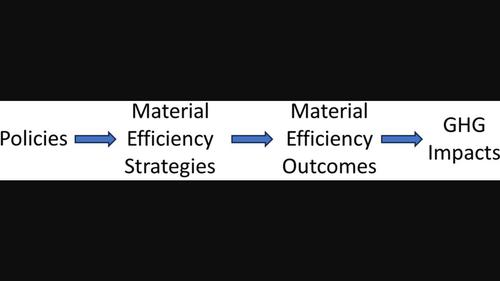Policy for material efficiency in homes and cars: Enabling new climate change mitigation strategies
引用次数: 0
Abstract
Material efficiency (ME), making products with less material or substituting with less carbon-intensive material without a loss of functionality, can reduce greenhouse gas (GHG) emissions and complement other strategies to mitigate climate change. Seven ME strategies for cars and homes in the G7 countries were recently modeled in a study by the International Resource Panel. Modeling indicates that ME strategies focusing on construction and use of homes could lower the overall cumulative emissions in the G7 between 2016 and 2060 by 8.5 Gt CO2e (20%), while ME strategies for the production and use of cars could reduce up to 12 Gt (24%). For both homes and cars, the strategy of more intensive use—where fewer or smaller products are required to provide the same basic service—showed the greatest potential. A review of existing ME policies reveals that attention to ME in climate policy has been limited. Policy toward ME has historically focused on waste management rather than GHG reduction. Ex post evaluation of policies that do exist, especially for recycling and related waste strategies, is infrequent. Framing efficient use of materials as a measure primarily intended for climate mitigation is relatively recent and uncommon. Production-related policy opportunities have been neglected because using ME to reduce GHGs is novel in some sectors and because increased ME faces economic and social barriers. Rebound effects where reduction of the cost of housing or transportation can increase material consumption offsetting potential gains, a problem for all efficiency-based approaches, is understudied and not currently addressed through policy.

提高住宅和汽车材料效率的政策:推动新的气候变化减缓战略
材料效率(ME),即在不损失功能的情况下,使用更少的材料制造产品或用碳密集度更低的材料进行替代,可以减少温室气体(GHG)排放,并与其他减缓气候变化的战略相辅相成。国际资源小组(International Resource Panel)最近的一项研究模拟了七国集团(G7)在汽车和住宅方面的七项 ME 战略。模型显示,以住宅建设和使用为重点的 ME 战略可使 G7 国家在 2016 年至 2060 年间的总体累计排放量减少 8.5 千兆吨二氧化碳当量(20%),而以汽车生产和使用为重点的 ME 战略最多可减少 12 千兆吨二氧化碳当量(24%)。对于家庭和汽车而言,更密集使用的战略--即需要更少或更小的产品来提供相同的基本服务--显示出最大的潜力。对现有 ME 政策的回顾表明,气候政策对 ME 的关注有限。针对 ME 的政策历来侧重于废物管理,而不是温室气体减排。对现有政策的事后评估,尤其是对回收利用和相关废物战略的事后评估并不常见。将材料的有效利用作为一项主要旨在减缓气候变化的措施,是相对较新的做法,也不常见。与生产相关的政策机会一直被忽视,因为在某些领域,利用能源效率来减少温室气体排放是一项新举措,而且增加能源效率还面临着经济和社会障碍。反弹效应是所有基于效率的方法都面临的一个问题,即住房或交通成本的降低会增加材料消耗,从而抵消潜在的收益。
本文章由计算机程序翻译,如有差异,请以英文原文为准。
求助全文
约1分钟内获得全文
求助全文

 求助内容:
求助内容: 应助结果提醒方式:
应助结果提醒方式:


